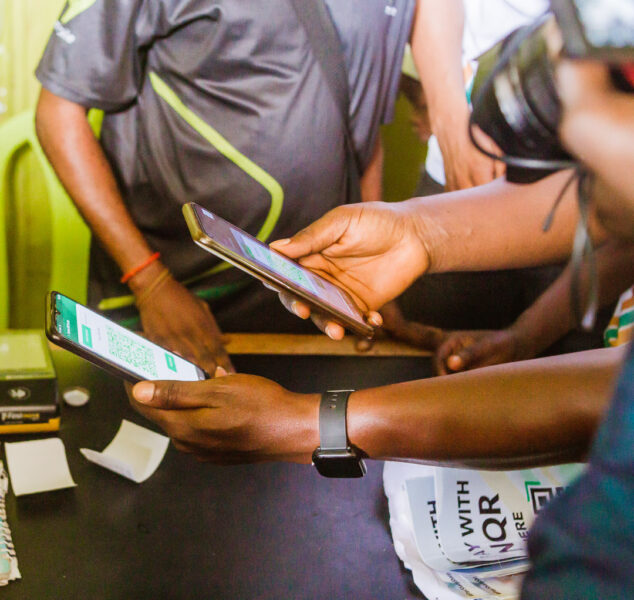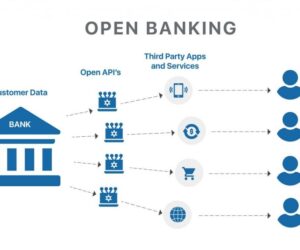The Nigerian fintech boom has been driven by massive app sign-ups. But this growth hardly translated into sustained use. Industry data suggest a large number of dormant fintech wallets in Nigeria. As one report noted, “access does not always translate into use; three out of every five mobile money accounts are either inactive or dormant.”
In Nigeria, even the government’s eNaira rollout illustrates the point that only 8% of eNaira wallets see any weekly transactions. Likewise, Nigeria’s leading fintech platforms advertise huge user bases – Kuda reported seven million customers by early 2024 and PalmPay claimed 35 million registered users – but the app-usage data tell a different story.
Sensor Tower analytics for Q2 2024 show OPay’s active weekly user base peaking around 3 million (out of tens of millions of downloads) and PalmPay’s active base around 1.7–2 million.

These gaps are consistent with local commentary. For example, MTN (owner of MoMo mobile money) recently refocused on “engaged, active users rather than millions of dormant wallets.”
Insiders point to promo-driven sign-ups and one-off usage as key culprits.
In an aggressive growth phase, Kuda and OPay flooded Nigeria with giveaways. Kuda initially waived all transfer fees (later limiting it to a fixed number of free transactions), and OPay gave large referral bonuses (₦600 per friend) and free airtime or cash rewards to new users.
These got millions of downloads, but most were opportunistic. Once the freebies or zero‑fee windows end, most of those accounts fall silent. As one analysis put it, such tactics were “only a way to get into the market.”
Fintech observers stress that firms must now study this churn. “Analysing customer data will become increasingly crucial,” Fintech News Africa notes, so companies can “discern churn patterns and optimise retention.”
In practice, many Nigerians download a new wallet app to claim a bonus or to use it for a single transaction (say, a one-time money transfer or bill payment) and then abandon it. Social influence magnifies the effect.
Strong word-of-mouth and referral programmes may push installs, but often without guaranteeing real engagement.


The result is that “customer acquisition” may have become too one-dimensional. For example, Kuda grew from five million users in early 2023 to seven million by 2024, below its goal of 10 million, underscoring that many acquired users didn’t stick around.
Likewise, OPay has acknowledged that card and app adoption is tapering off: early “explosive growth” (13 million cards issued, for instance) has given way to “diminishing returns” as customers are learning to transact without costly incentives.
Recent reports and interviews point to a common pattern of promo-fuelled signups which help generate huge download numbers, but most wallets quickly go dormant.
Free transfers, cash rewards and peer referrals lure people in, but without ongoing usage incentives, they drift away. Industry voices now emphasise the need to cultivate “quality” users. Analysts recommend fintech entities deepen user experience and retention strategies to turn the tide.
Trust, friction, and financial realities
Under the hype of millions of wallet sign-ups lies a deeper, more human truth: Trust matters.
Many Nigerians remain wary of leaving their money in fintech wallets. Numerous reports abound of failed transfers, frozen balances, and sluggish customer support, which hardly build confidence.
In a cash-oriented society, even a minor glitch can prompt users to treat wallets like short-term passageways: load just enough, transact, and withdraw.


Recall that in 2024, Prospa users publicly complained of withdrawal delays and platform downtimes, with several unable to access their funds despite urgent business needs. The firm attributed stall-outs to third-party disruptions, but user trust had already been shaken.
KYC and verification bottlenecks have also eroded patience. While onboarding may feel quick, once a user hits a balance ceiling, they’re prompted for BVN or government ID, steps that too often lead to drop-off.
Then, failed transactions are made worse by poor network quality.
Another key layer is Nigeria’s financial reality. Wallets work best with predictable cash flow, but many Nigerians earn daily and live hand-to-mouth. Apps that “lock” funds for savings or incentives don’t mesh with lives that demand instant access to every naira. Informal systems, like alajo savings circles, offer flexibility and community trust. Fintech struggles to match both.
Misinformation worsens the trust gap. According to a fact-check report, fintech brands were top targets for fake loan scams and fraudsters mimicking official apps, itself a barrier to adoption.
Wallet dormancy isn’t just a behavioural quirk; it’s a symptom of fragile trust, platform friction, and misalignment with how Nigerians manage money. Until fintech companies address these real-world realities, dormant wallets will remain the quiet cost of ‘growth by numbers.’
Are dormant fintech wallets in Nigeria a potential?
Dormant wallets in Nigerian fintech aren’t an anomaly; they’re part of a global pattern. A 2023 GSMA report found that only 26% of mobile money accounts worldwide are active monthly, and just 38% remain active over 90 days.
That means roughly 74% of accounts go unused monthly, a massive pool of inactive user potential. In Sub-Saharan Africa, the issue is even more acute. A 2017 CGAP analysis combining GSMA and Findex data revealed that an estimated 64% of mobile money accounts were dormant.
In Uganda, central bank data shows that around 45% of mobile money accounts were inactive for over 90 days. Meanwhile, in Kenya, 41 million out of 68 million mobile money accounts were dormant as of December 2021, nearly 60% inactive.


These are not minor blips, but systemic patterns: dormant wallets are more the norm than the exception. That said, they represent both a warning sign and an opportunity.
Dormant accounts signal weak engagement and low retention, critical warning signs for fintech sustainability. If three-quarters of wallets sit idle, this indicates shallow user journeys and fragile loyalty. For growing services, this raises costs.
Acquiring a new user is often 5–7 times more expensive than retaining one. Dormancy can bleed growth potential by undermining product viability, inflating customer acquisition costs, and weakening unit economics.
At the same time, dormant wallets offer a reservoir for reactivation. Many providers are beginning to focus not solely on sign-ups, but on getting users to transact, introducing services like:
- Bill pay, which fosters regular use,
- Microcredit and loans, encouraging engagement,
- Savings goals, which incentivise retention through discipline, and
- Reward programs, to capture attention.
Globally, about 44% of mobile money providers offer credit, with savings and insurance becoming increasingly common products. These cross-selling opportunities can turn dormant wallets into recurring users.








